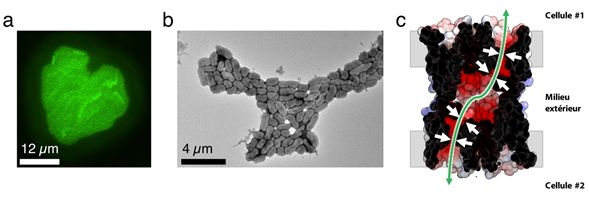Researchers at the Institute de Biologie Structurale in Grenoble, the University of the Mediterranean in Marseille and the Jacobs University in Bremen have shown that the gram-negative pathogen
Providencia stuartii forms floating communities within which adjacent cells are in apparent contact, before depositing as canonical surface-attached biofilms. Because porins are the most abundant proteins in the outer membrane of gram-negative bacteria, they hypothesized that they could be involved in cell-to-cell contact and undertook a structure-function relationship study on the two porins of
P. stuartii, Omp-Pst1 and Omp-Pst2. The crystal structures reveal that these porins can self associate through their extracellular loops, forming dimers of trimers (DOTs) that could enable cell-to-cell contact within floating communities. Support for this hypothesis was obtained by studying the porin-dependent aggregation of liposomes and model cells. The observation that facing channels are open in the two porin structures suggests that DOTs could not only promote cell-to-cell contact but also contribute to intercellular communication. Proteins involved in this interaction could be new targets in the fight against biofilms.
